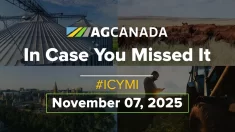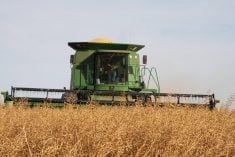TRUAX, Sask. – He started writing because he had something to say and kept going as more newspapers picked up his columns.
Call Paul Beingessner the accidental columnist.
He is also a grain and livestock farmer and a news junkie who delights in poring over internet sites.
“I try to listen to news, read farm newspapers and look for something that stands out, whether interesting or stupid,” says Beingessner, who farms near Truax.
Criticism is inevitable in journalism, but Beingessner is troubled only by rude responses.
Read Also

Europe holds promise for Canadian lentils
Pulse Canada is trying to help boost lentil consumption in Europe, which is already the fourth largest market.
“It misses the point of that we’re all sincere and trying to make farming better,” he said.
“That is what the dialogue and the discussion is all about. I have strong opinions, but I don’t believe they’re always right. They’re based on my view of the world.”
His career path, like his writing, has happened largely by accident instead of design.
Beingessner graduated with an arts degree in psychology and worked with troubled teens and the multiply handicapped in Regina before moving back to the farm.
When talk surfaced that Canadian National Railway was planning to abandon the branch line that ran through Truax, Beingessner jumped in with both feet to save it.
It was a formidable challenge for a diminutive man who considers himself shy and uncomfortable in crowds.
“I never overcame that, but I learned to deal with it,” he said.
His rail line advocacy led to the formation of the Southern Rails Co-operative and his involvement on its board. Later, when grain prices on the farm “dropped like a stone,” Beingessner took an off-farm job as the line’s manager.
In between, he picked up consulting jobs with the Farmer Rail Car Coalition, Red Coat Road and Rail, Saskatchewan Highways and the Action Committee on the Rural Economy. That spawned work guiding the Grain Logistics pilot project, helping community groups set up short lines and writing briefing notes for the Estey Review of grain transportation.
“Rail abandonment was a big issue at the time,” he said.
Beingessner explored obstacles to producer car loading and developed a system to blend available grain virtually, something lines such as West Central Road and Rail do today by shipping unit loads from each farmer and blending them at the port.
Computer programs allow grain to be blended electronically rather than doing it at the elevator.
Today, Southern Rails employs four full-time staff, operating the line from Truax to Moose Jaw and doing rail maintenance for other companies.
Beingessner said companies such as his had an uneasy relationship with rail lines and grain companies such as the former Saskatchewan Wheat Pool, which at the time was consolidating elevators and building large centralized concrete terminals.
He said most of these companies saw farmer-run railways as threats and were not keen to see road-rail lines or short lines dotting the landscape.
By contrast, the Saskatchewan government of the day was supportive.
“Without the province, it never would have happened,” he said.
“There was a dedicated team in the department of highways with a terrific interest in rural Saskatchewan.”
Producer Gordon Fritzke, former president of the Golden Prairie Short Line Rail Co-operative, has worked with Beingessner on grain coalitions and short-line rail groups over the last decade.
Fritzke remembers a feasibility study Beingessner wrote for Golden Prairie that was “right on.”
“Paul does very thorough work,.”
Fritzke called Beingessner an intelligent, well read and polite person.
“When at a meeting with him, he doesn’t fly off the handle or speak out of turn,” he said.
“He knows how to ask the right questions.”
Fritzke enjoys Beingessner’s news columns and wishes they were read more widely.
“Paul is not mouthy or rude in columns, but it pinches quite a few toes,” he said of columns ranging from railways to biotechnology to plant patents.
Rural life suits Beingessner, a self-professed outdoorsman who likes hunting, raising animals and working for himself.
“If farming had been good, I might never have worked off farm,” Beingessner said.
“Life kind of takes you to places you don’t expect.”
Raising cattle and sheep consumes most of his days, and he writes the columns that appear in newspapers and websites in the evenings.
A father of five, the 54-year-old is married to Faye, who works full time in health care off the farm. Their youngest is at home and in Grade 8.
The farm is 2,000 acres, considerably smaller than many of his neighbours. About half of that acreage is tame and native pastures filled with coulees and land not suitable for crops but adequate for his 70-head cow calf operation and 100 ewes.
He direct markets many of his lambs to nearby meat markets in Regina.
“I like the idea of supplying food,” he said.














